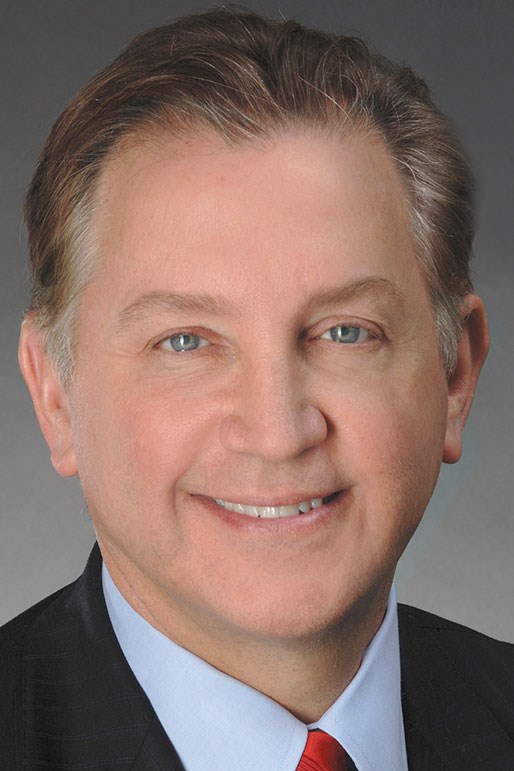Plastic Surgery Perspectives: Craniofacial Surgery

"Plastic Surgery Perspectives" is a recurring series of posts on the PRS Resident Chronicles blog led by Stav Brown, MD, at the Sackler School of Medicine in Tel Aviv University, and Plastic and Reconstructive Surgery Research Fellow in the Department of Surgery at Memorial Sloan Kettering Cancer Center, New York. In this installment of the series dedicated to craniofacial surgery, Dr. Brown interviews Francis Papay, MD, chair of Cleveland Clinic's Dermatology and Plastic Surgery Institute and Plastic and Reconstructive Surgery Department. – Rod J. Rohrich, MD, PRS Editor Emeritus
PSR: Why did you choose plastic surgery and craniofacial surgery in particular?
Dr. Papay: I originally chose plastic surgery because it was a conduit to craniofacial surgery. My background is ENT, but even before that I was interested in neurosurgery – especially functional neurosurgery. Intrigued by skull base surgery, I wanted to go through ENT, plastics and then craniofacial. I did a flexible surgical internship year and spent three months in the neurointensive care unit. During that time, I realized that neurosurgery was not what I thought it was going to be, so I decided to go for skull base and craniofacial surgery. For skull base surgery, a lot of the learning involved otolaryngology, head and neck and cancer surgery.
We were the first to write about endoscopic CSF leak repair and did some of the early endoscopic sinus surgeries. From there, I went into plastics planning to focus on craniofacial. Craniofacial at that time was what we call "the second generation," or "the students of the Tessier students." I immensely enjoyed pediatric surgery, including cleft lip and palate and craniosynostosis. Now in the late summer of my career, I find myself doing mostly what I started from. I am using my biomedical engineering background to look at extracranial neuromodulation, which I consider extracranial functional neurosurgery. We have several companies – the first is looking at neuromodulation of the sphenopalatine ganglion for cluster migraine headaches, the second is looking at regulating the blood brain barrier through controlling the sympathetic and parasympathetic input into the covering of the brain and the third is looking at neuromodulating the arborization of the hypoglossal nerve into the extrinsic tongue muscles to bring the tongue forward for sleep apnea. I was incredibly excited to start these pathways through craniofacial surgery.
PSR: Tell us about an individual that has influenced you or shaped your view of the field?
Dr. Papay: I had a brother, three years older than me, who drowned when I was 13. That taught me very early in life that life is short and finite, and you should take risks. In a serendipitous fashion, much like the titular character in "Forrest Gump," I met several people who shaped my path and influenced me. Working at NASA, I met Dean Kamen on a panel. I consider Kamen to be the best inventor since Thomas Edison, and he taught me not only to invent but also to utilize technology transfer – in other words, look around first to see if someone else has already come up with a technology you can apply. I usually connect to people who have that childlike, enthusiastic approach to life and are amazed with technology. Within the plastic surgery world, Joseph Gruss, MD; Joseph McCarthy, MD; and William Futrell, MD, affected me deeply through their approach to technology and adoption of technology and innovation. I've also learned a lot through reverse mentorship from younger people whose passion drives energy. Almost like a vampire, I try to adapt their energy into mine.
The "Forrest Gump" effect is powerful, and I am just finishing a book that I wrote on the power of serendipity in relationships and that can lead to amazing things. Forrest Gump, like me, wasn't the brightest bulb in the batch, but he was able to get all the other bulbs to light up through the people he surrounds himself with. I'm a boy from Ohio who found myself in incredible situations like being on the cover of a magazine or doing a face transplant. Through serendipity, I met people that helped me. The collective genius that comes together is what makes things happen.
PSR: If you had to pick one trait that has transformed you and made you who you are today, what would it be?
Dr. Papay: Social adaptability. The ability to read an audience, knowing that as a leader, I can be different to you and to the next person. Social intelligence is a street-type of intelligence that is incredibly important. I teach my boys how to work with others and how to listen to others. Listening can be hard if you are talking all the time. It requires self-esteem strength. A lot of what we do as plastic surgeons – especially in aesthetics – is what I call "surgery of self-esteem." Building your own self-esteem to a point where you can listen more than you talk is important.
PSR: What advice do you have for residents interested in craniofacial surgery?
Dr. Papay: Do not focus. Be as broad as you can because the way your practice goes or the way your research goes will change through serendipity. What you are today will be different in the future. As the architect of your life, you can plan what your building will be, but you aren't always able to know what it will eventually be. We are constantly changing based on our environment, so do not lock yourself into a hyper sub-subspecialty. I am still evolving – and I have changed my practice constantly learning from different subspecialties – not just in surgery or medicine, but many different fields such as music, engineering and cellular biology. The beauty of plastic surgery is that it is so broad. So be broad in your approach to your career and your life.